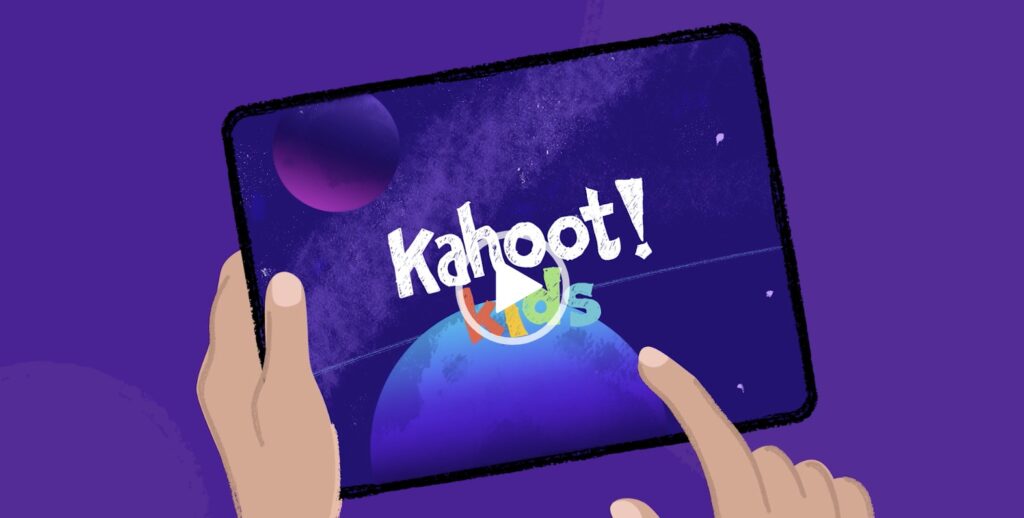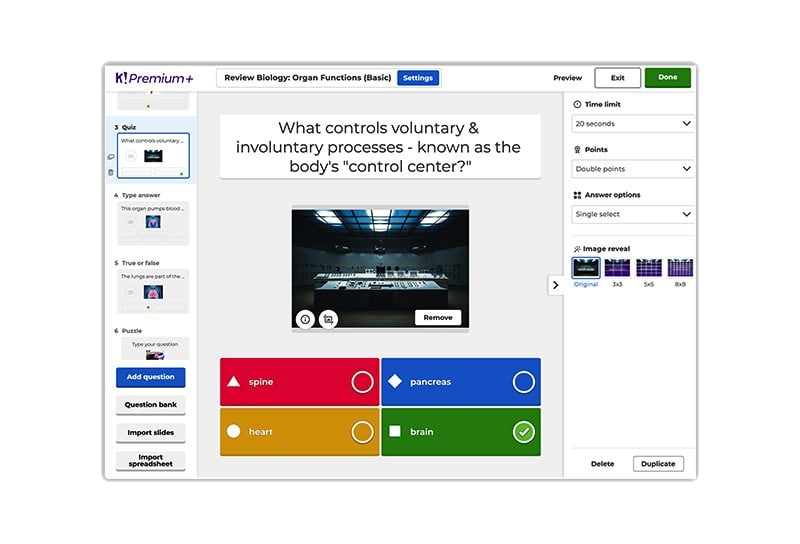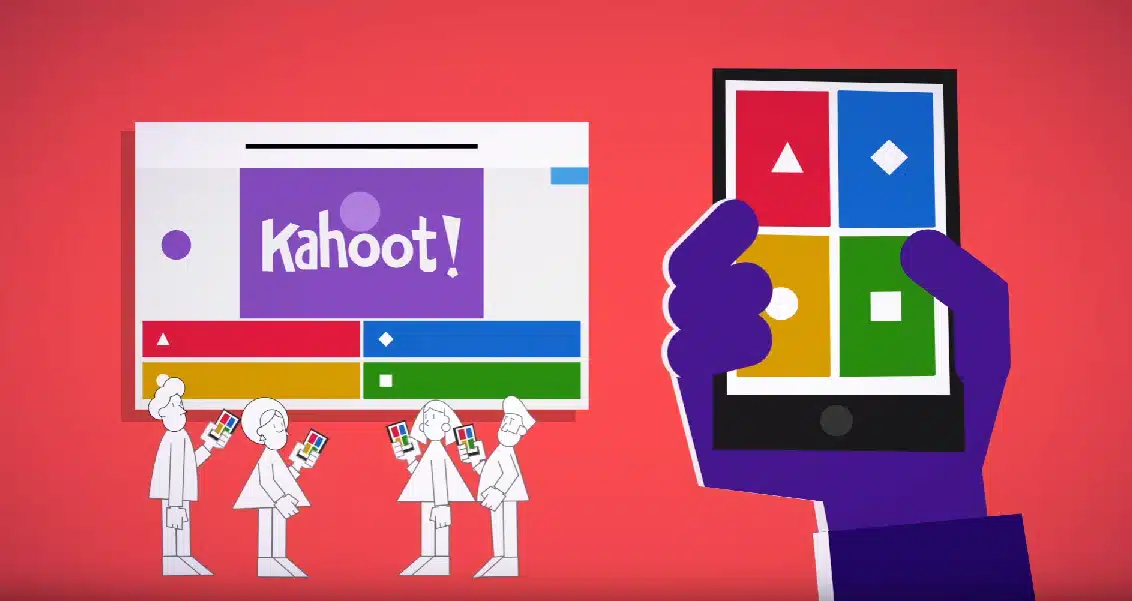In the realm of modern education, fostering engagement and interactivity in the classroom is an ongoing challenge for educators. Fortunately, a game-changer has emerged in the form of Kahoot! Kahoot, the gamification learning app, has been making waves in the educational technology landscape. Its engaging quizzes, user-generated content, and interactive design have propelled it to the forefront of online learning. In this in-depth guide, we will delve into what Kahoot is, how it fits into the elearning ecosystem, how it works, its revenue model, and its effectiveness as an educational tool. Whether you’re new to Kahoot or looking to enhance your Kahoot mastery, this guide has you covered.
What is Kahoot?
Kahoot, often stylized as Kahoot!, is a widely popular gamification learning app centered around competitive quizzes. Its friendly and user-friendly interface boasts a repository of quizzes contributed by users, educational institutions, and even entertainment giants like Disney. With numerous design strategies that make it irresistible to complete just one more quiz and climb up the ranks, Kahoot has garnered over a million paid users in 2020.
The Evolution of Kahoot’s Value
In 2020, Kahoot’s valuation dipped to around $6 billion USD, only to rebound to $1.7 billion as it returned to private ownership. However, its revenues have been steadily climbing. Kahoot’s resilience in the post-pandemic EdTech landscape has set it apart from its peers.
In 2019, Kahoot reported revenues of $13 million, which surged to $45.2 million in 2020, marking a remarkable twofold increase. Founded at the Norwegian University of Science and Technology (NTNU) by Johan Brand, Jamie Brooker, and Morten Versvik, Kahoot is now led by Eilert Hanoa and enjoys the support of Japanese venture capital firm SoftBank. Notable alliances have been formed with industry giants like Microsoft, Disney, and LEGO. Kahoot’s strategic acquisitions include Drops, a language learning app akin to Duolingo or Memrise, and Clever.
Understanding Kahoot’s Educational Role
Kahoot plays a multifaceted role within the educational technology landscape. It can be categorized within the realms of quizzes, gamification, social learning, and microlearning. Its practicality lies in its ability to assess learning dynamically and interactively. Whether you’re creating your own “Kahoots” or exploring the vast online library, Kahoot encourages students to compete, test their knowledge, and respond swiftly and accurately.
Kahoot can be utilized both live and asynchronously for short sessions. However, it is not recommended for complex assessments or standardized testing. Teachers and students alike can discover innovative ways to engage with assessments through Kahoot. It facilitates quick feedback for teachers and promotes peer evaluation effectively.
How Kahoot Works
Getting started with Kahoot is a breeze. Users can register for free on the Kahoot website and begin creating “Kahoots,” which are essentially multiple-choice quizzes. These quizzes can be shared and broadcasted on a live dashboard, complete with real-time question prompts and leaderboards.
Participants join a Kahoot by entering a unique pin using a mobile application (available on Android and iOS) or the website. Their devices then transform into remote controls for answering questions displayed on the host’s screen.
During the game, participants must answer questions within a time limit. After each question, scores of participants are displayed, fostering healthy competition. Correct answers provided quickly yield higher scores. The instant leaderboard updates serve as powerful motivators, encouraging students to outperform their peers.
When the game concludes, a podium showcases the winners, and teachers can export results to a CSV file. Although there is no known LMS integration, the Kahoot API offers methods to automate reporting and other capabilities.
Why Kahoot!?
- Free Accessibility: One of Kahoot!’s standout features is its accessibility. It offers a free-to-use platform, making it a viable option for both teachers and students. This accessibility extends to a wide range of devices, from laptops and tablets to smartphones.
- Diverse Content: Kahoot! boasts a repository of over 40 million pre-existing games, covering a multitude of subjects and topics. This wealth of content makes it a go-to choice for educators with varying teaching needs.

Getting Started with Kahoot!
If you’re ready to embark on an educational journey powered by Kahoot!, here’s a step-by-step guide:
- Sign Up: Head to getkahoot.com and create your free account. Choose “Teacher” and specify your institution type.
- Registration: Register using your email and password, or opt for the convenience of a Google or Microsoft account, perfect for schools using Google Classroom or Microsoft Teams.
- Exploring Options: With your account in hand, you’re ready to start crafting quizzes. You can either create your own or explore the extensive library of half a million questions already available on Kahoot!
Who Can Benefit from Kahoot!?
Kahoot! transcends device boundaries. It seamlessly runs on laptops, tablets, smartphones, Chromebooks, and desktop computers. Moreover, it offers compatibility with Microsoft Teams, enabling effortless sharing of challenges. For those opting for premium or pro versions, collaborative quiz creation becomes a reality.
Unveiling Kahoot!’s Best Features
As you dive deeper into the world of Kahoot!, several features stand out, enhancing the learning experience for both teachers and students.
1. Ghost Mode
Incorporate the competitive spirit into learning with Ghost mode. Students can compete against their previous high scores, transforming the educational journey into a thrilling game of self-improvement.
2. Analytics
Harness the power of analytics to gain insights into each student’s performance. Identify areas where students are struggling, allowing for tailored assistance and support.
3. Copy Quizzes
Kahoot! offers a treasure trove of quizzes created by educators. Feel free to use them to enrich your teaching materials. You can even merge multiple Kahoots to create the ultimate quiz experience.
4. Pre-Assessment
Use Kahoot! quizzes as pre-assessment tools. Gauge your students’ knowledge before diving into a subject, ensuring that your teaching is perfectly aligned with their needs.
5. Multimedia Integration
Kahoot! seamlessly integrates multimedia elements, including videos from YouTube. Engage your students with video content and reinforce their learning through post-video questions.

Maximizing Kahoot! for Classroom Success
As you implement Kahoot! into your teaching arsenal, consider these effective strategies:
- Class Kick-off: Start your class with a Kahoot! quiz to assess prior knowledge. This allows you to tailor your teaching to meet the specific needs of your students.
- Time-Saving Quizzes: Utilize pre-existing questions within Kahoot! to craft personalized quizzes without the need to create every question from scratch.
- Friendly Competition: Leverage Ghost mode to let students compete against their past performances. This provides valuable insights into their progress over time.
- Student-Generated Content: Encourage your students to create their own quizzes, fostering a collaborative learning environment and showcasing their knowledge.
Why Choose Kahoot? (or a Competitor)
Kahoot has transformed virtual assessments and activities in the educational technology industry. Creating, administering, and compiling results of exams is simplified with Kahoot. Teachers find it easy to join the platform, create Kahoots, and share them with students. Kahoot not only motivates and assesses learning but also adds an element of fun. Many teachers use Kahoot as an in-session reward, irrespective of its evaluative role.
Teachers can download quiz results as CSV files, facilitating integration with gradebook tools or learning management systems (LMS). Kahoot’s ease of use sets it apart from competitors. Premium members gain access to additional features and analytics, enhancing the learning experience.
Alternatives to Kahoot! – Exploring Competitors
While Kahoot is a dominant player in the online quiz creation sphere, several alternatives offer similar functionalities:
1. Socrative:
Socrative takes a more serious approach to game-based learning. It features quizzes, rooms, and leaderboards. Users can sign up for free to have their own room for one class and engage up to 50 students with five quizzes at a time.
2. Quizizz:
Quizizz closely resembles Kahoot in terms of quiz creation and gameplay. However, it distinguishes itself with unique features such as the ability to earn points during quizzes and the inclusion of goodies like wildcards and power-ups.
3. Quizlet:
Quizlet focuses on flashcards with text and images. What sets it apart is its automatic creation of activities and games based on the educational cards. This feature can save significant time in quiz design compared to Kahoot.
4. Gimkit:
Gimkit offers a unique approach where participants accumulate points to purchase “power-ups” in a store. These power-ups boost scores and protect against penalties for incorrect answers.
Kahoot’s Impressive Growth
In 2023, Kahoot reached an astounding milestone: 9 billion games played. The number of users and organizations relying on Kahoot surged during the pandemic, with 1 million paid users prior to the private equity deal.
Is Kahoot! Safe?
Kahoot prioritizes modern security standards when handling user information. Its security and personal data policies receive high ratings from the SSLTrust review aggregator. Common Sense Media, a parental review site, gives Kahoot a 4-star rating. The main critique is the blurring of boundaries between educational and commercial content in the library, especially content created by entertainment companies.
While Kahoot only requires minimal personal information, it collects and stores usage data. In some cases, Kahoot may use this data for third-party verification or internal marketing. Users can access the privacy policy for further details.
Kahoots created by users are stored in a personal collection, allowing users to bookmark and share their favorite Kahoots with students, friends, and teachers. This information may be used to recommend Kahoots to other users.
Kahoot stands as a versatile and engaging tool in the educational technology landscape. Its gamification approach to learning, ease of use, and potential for enhancing student engagement make it a valuable asset for educators. By understanding its features and best practices, educators can harness the power of Kahoot to create dynamic and interactive learning experiences for their students.
Explore the possibilities, unleash your creativity, and transform your teaching with Kahoot!
To embark on your Kahoot! journey, simply visit getkahoot.com and unlock the endless possibilities of interactive learning.






